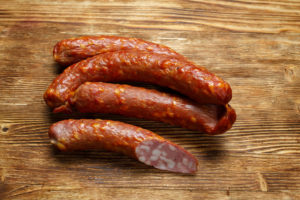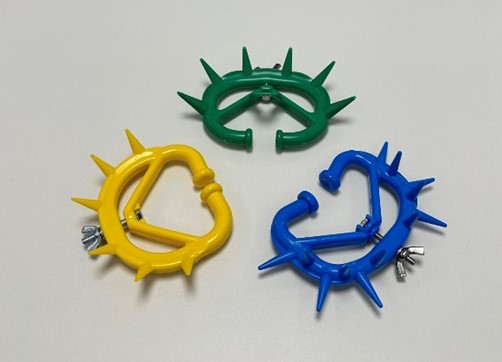“I stuck it in the refrigerator, and there was sausage there.” How can you tell if a restaurant has bad food?

Photo is illustrative in nature. From open sources.
Topic news How to understand that you are being fed bad food? Why is not only the taste of a dish important, but also the smell and even the color? When does the menu resemble a game of Russian roulette? Leonid Mogdalov reports.
- Especially noticeable on seafood, fish, fresh herbs. We understand perfectly well what greens should look like - organoleptic indicators: taste, color, aroma, everything is very important. Insanely simple, we all understand perfectly well what is good and what is bad. This will be visible in the muscle fibers of pork and fish. Fish , for example, should not be loose and fall apart or turn into mush. Pork fibers should be smooth, crisp, and not unraveling. Moreover, poor quality does not mean that the MEAT orthe fish are already smelling. Poor quality occurs already at the stage when fresh food is stored in the refrigerator and the temperature regime is not maintained.
I understand that there are sanitation standards, but still there are some human thoughts and ways that one cannot be kept with the other. The confectionery should not be stored with butter, or MILK, or anything else at all in the refrigerator, because it picks up odors very strongly. It should give off taste and aroma, but it gains from neighboring products. It happens that you eat a classic New York cheesecake with vanilla bean, but it tastes like Moskovskaya sausage. The cook just put it - there was nowhere to put it - in the refrigerator, and the sausage was lying there. Yes, on the shelf below or three shelves later, it didn’t seem like they were touching each other. But there is only one camera, and these smells have an effect. The quality is ruined.
But chefs look at it from a different perspective. That the product itself is not spoiled, the taste has not changed by and large. That is, now he can either write it off and pay out of his own pocket, or sell it. What will they do? They will sell it, no one will want to pay. Will this affect the cook? Nobody knows him, this cook. He's hiding in the closed kitchen; maybe the people in the next workshop might not know him. I came across this while working in Moscow. There, the people from the cold shop didn’t know the names of the people from the hot shop, because there were 30 people on shift, there were 40. The restaurant had 1,500 seats, three floors.
In addition to quality criteria, there are also rules for the presentation of the dish. And sometimes a product is also considered to be served incorrectly, since it is incorrectly presented on the plate - the display rules are not followed, and so on. There are actually a lot of such examples. We all know what a classic Margherita pizza is, right? Ingredients: mozzarella cheese, tomatoes and green basil. What is this? Why classic pizza, why pizza number one? The tricolor: green basil, white mozzarella, red tomato is the flag of Italy. National treasure, Margherita pizza. Why was it called "Margarita"? Because, according to legend, the first one was prepared for the ruler of Italy.
What can happen in our kitchen? Trivial things, ignorance of these stories. A supplier is on his way to the market; the order says “fresh basil.” OK. But there is no green basil, there is purple - “reyhan” is called differently. Listen, well, basil and basil, let's go purple. One buys it, brings it to the restaurant, the second uses it in cooking. He uses purple basil instead of green on Margherita pizza. That is, he changes the color of the Italian flag, he can afford it. So what, does basil taste like it? Nothing, by and large. Go and change the color of the flag. This is already a violation of the design of the dish.
A mistake many establishments have probably encountered: you see a menu with photographs in an establishment, and it resembles the game of Russian roulette, expectations and reality. You order, choose from the photo, and then they bring it to you, and the next question is to the waiter: “What is this? Did I order this? Look here.” The waiter can only say: “This is a cook, this is an artist. This is how he sees.” That's all.
| Prepared from BELTA video, video screenshot and photo from open Internet sources
- Especially noticeable on seafood, fish, fresh herbs. We understand perfectly well what greens should look like - organoleptic indicators: taste, color, aroma, everything is very important. Insanely simple, we all understand perfectly well what is good and what is bad. This will be visible in the muscle fibers of pork and fish. Fish , for example, should not be loose and fall apart or turn into mush. Pork fibers should be smooth, crisp, and not unraveling. Moreover, poor quality does not mean that the MEAT orthe fish are already smelling. Poor quality occurs already at the stage when fresh food is stored in the refrigerator and the temperature regime is not maintained.
I understand that there are sanitation standards, but still there are some human thoughts and ways that one cannot be kept with the other. The confectionery should not be stored with butter, or MILK, or anything else at all in the refrigerator, because it picks up odors very strongly. It should give off taste and aroma, but it gains from neighboring products. It happens that you eat a classic New York cheesecake with vanilla bean, but it tastes like Moskovskaya sausage. The cook just put it - there was nowhere to put it - in the refrigerator, and the sausage was lying there. Yes, on the shelf below or three shelves later, it didn’t seem like they were touching each other. But there is only one camera, and these smells have an effect. The quality is ruined.
But chefs look at it from a different perspective. That the product itself is not spoiled, the taste has not changed by and large. That is, now he can either write it off and pay out of his own pocket, or sell it. What will they do? They will sell it, no one will want to pay. Will this affect the cook? Nobody knows him, this cook. He's hiding in the closed kitchen; maybe the people in the next workshop might not know him. I came across this while working in Moscow. There, the people from the cold shop didn’t know the names of the people from the hot shop, because there were 30 people on shift, there were 40. The restaurant had 1,500 seats, three floors.
In addition to quality criteria, there are also rules for the presentation of the dish. And sometimes a product is also considered to be served incorrectly, since it is incorrectly presented on the plate - the display rules are not followed, and so on. There are actually a lot of such examples. We all know what a classic Margherita pizza is, right? Ingredients: mozzarella cheese, tomatoes and green basil. What is this? Why classic pizza, why pizza number one? The tricolor: green basil, white mozzarella, red tomato is the flag of Italy. National treasure, Margherita pizza. Why was it called "Margarita"? Because, according to legend, the first one was prepared for the ruler of Italy.
What can happen in our kitchen? Trivial things, ignorance of these stories. A supplier is on his way to the market; the order says “fresh basil.” OK. But there is no green basil, there is purple - “reyhan” is called differently. Listen, well, basil and basil, let's go purple. One buys it, brings it to the restaurant, the second uses it in cooking. He uses purple basil instead of green on Margherita pizza. That is, he changes the color of the Italian flag, he can afford it. So what, does basil taste like it? Nothing, by and large. Go and change the color of the flag. This is already a violation of the design of the dish.
A mistake many establishments have probably encountered: you see a menu with photographs in an establishment, and it resembles the game of Russian roulette, expectations and reality. You order, choose from the photo, and then they bring it to you, and the next question is to the waiter: “What is this? Did I order this? Look here.” The waiter can only say: “This is a cook, this is an artist. This is how he sees.” That's all.
| Prepared from BELTA video, video screenshot and photo from open Internet sources
Read together with it:
- Miratorg's 15th Anniversary: The Meat Retail Leader Celebrates Its AnniversarySince its founding, Miratorg has sold over 4 million tons of MEAT products and created approximately 2,000 jobs. Its branded stores employ meat experts who help customers select the best products and conduct master classes. The chain's assortment includes not only its own meat but also a variety of unique products from RUSSIA and abroad, including a premium wine collection curated by a sommelier. ...
- Новое видео на нашем канале: Какую породу овец выбрать в Казахстане? Эдильбаевская или импортные мясные породы? Опыт фермеровОвцеводство в Казахстане. Эдильбаевская порода, дорпер, суффольк, тексель, аккарабас. Отбор баранов-производителей, взвешивание, мясные качества и рентабельность Мы продолжаем съёмки про овцеводство Казахстана. В этом выпуске в кадре сразу несколько пород: эдильбаевская, аккарабас, тексель, суффольк, дорпер, а также кроссы и помеси. Мы показываем отбор баранов-производителей на случку, взвешивание...
- Боливия экспортирует говядину на сумму 797 миллионов долларов и вводит новые цифровые сертификаты для внешней торговлиЭкспорт говядины из Боливии в период с 2021 по 2025 год достиг 797 миллионов долларов. Китай является основным рынком сбыта этого мяса, на который приходится 74% продаж, сообщила Карина Серрудо, генеральный директор Национального таможенного управления. Параллельно с этим ведомство включило сертификат безопасности экспортных пищевых продуктов для говядины в систему «Единое окно для внешней торговл...



























































